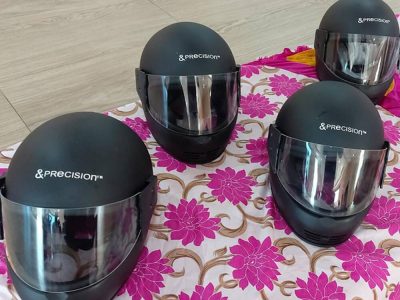
6 Energy-Saving Tips for your Home & Office
June 15, 2023
Home Ambience: Let There Be Light Holders!
July 20, 2023The Importance of Distribution Boxes in Electrical Systems
Ever been in one of your building’s electrical rooms?
With all the wires, toggle-switches, and flip-switches around, it is unlikely that you would have known what is what.
If you’re like a regular homeowner, you won’t give it much thought.
It’s not your business.
But you’d still be curious about which component controls most of the electrical goings-on, wouldn’t you?
The distribution box is that equipment. This unassuming component of building infrastructure plays a critical role in the safe and efficient operation of electrical systems everywhere.
In this blog post, we’ll explore answers to questions surrounding the mystery.
What is a Distribution Box?
A distribution box is an exposed or concealed metal box that houses the circuit breakers that regulate the distribution of electricity throughout a building.
This piece of equipment is also known as a distribution panel, distribution board, and circuit breaker panel. The box is usually located in a utility room, garage, under the stairs, or basement. It is directly connected to the main power supply for the building.
The miniature circuit breakers in the distribution box are designed to protect the electrical system from overloading or short-circuiting.
When too much electricity flows through a circuit, the circuit breaker trips, cutting off the power and preventing damage to the system.
Why is a Distribution Box Important?
A distribution box is necessary for several reasons:
Safety: The miniature circuit breakers in the distribution box are designed to protect your home or office from electrical fires and other hazards. Without them, overcurrent or short-circuit could cause the wires in the system to catch fire.
Convenience: The distribution box allows you to control the flow of electricity to different parts of your home or office. You can turn off the power to specific circuits or areas of the building without affecting the rest of the system. This makes it easier to perform maintenance or repairs on the electrical system.
Capacity: The distribution box is designed to handle the electrical load of your home or office. If you need to add new circuits or appliances, you may need to upgrade your box to ensure that it can handle the increased demand.
Compliance: In many jurisdictions, building codes require that homes and offices have a distribution box to ensure the safety of the electrical system. Without a box, you may not be in compliance with local regulations.
How does a distribution box work?
The distribution box is connected to the main power supply for your home or office through a service entrance cable.
The box then distributes the power to different circuits throughout the building.
Each circuit is protected by a circuit breaker which is designed to “trip” if the circuit overloads or short-circuits.
This protects the wires in the circuit from overheating and causing a fire.
When a circuit breaker trips, it can be reset by flipping the switch back to the “on” position. If a fuse blows, it must be replaced with a new one.
How to maintain your distribution box?
It’s important to keep your distribution box in good working condition to ensure the safety and efficiency of your electrical system.
Here are a few tips for maintaining your box:
- Keep the area around the box clear: Don’t store anything in front of or on top of the box, and make sure that there is plenty of space for ventilation.
- Test your miniature circuit breakers regularly: Every few months, test the miniature circuit breakers to ensure they’re working properly. Flip the switch off and then back on.
- Have your box inspected by a professional: If you’re not comfortable working with electricity, it’s a good idea to have your distribution box inspected by a licensed electrician every few years.
In conclusion, the distribution box is a critical component of your electrical system. It ensures the safety and efficiency of your home or office by controlling the flow of electricity and protecting against hazards.
Make sure that your nearest electrical accessories provider has the expertise to provide these in bulk to your building or property. Precision Electricals is one such supplier that has this in spades!



































































